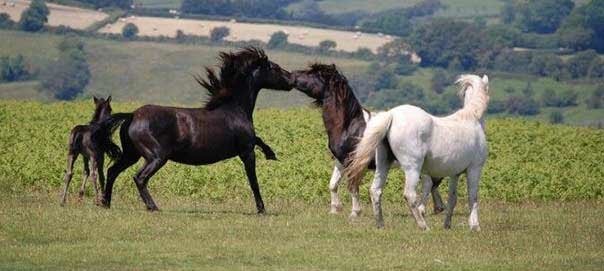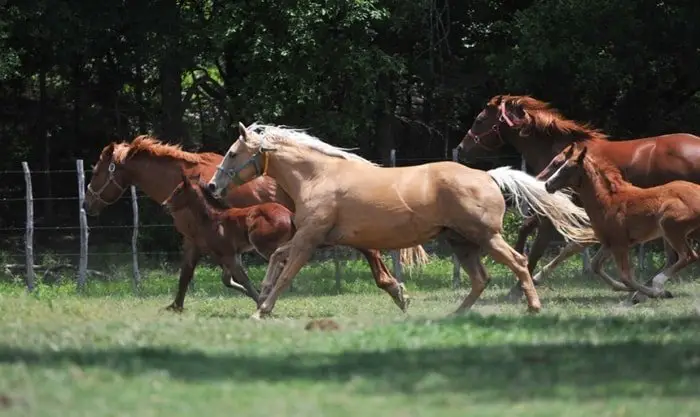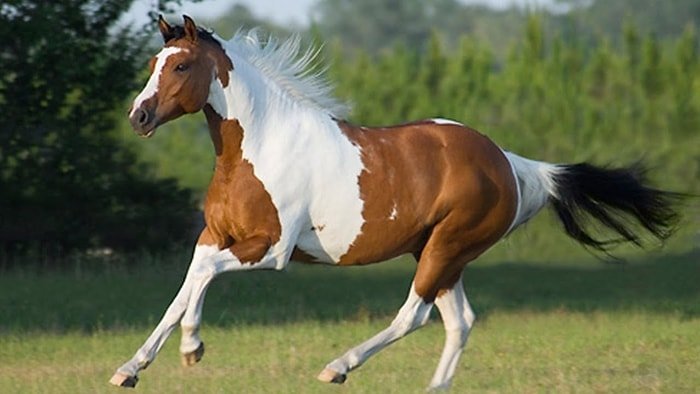Equine flu or equine influenza is a viral disease of horses characterized by severe nasal discharge, coughing, difficulty in breathing, and caused by Equine Influenza Virus Type-A (H7N7) and Type-B(H3N8). The disease is contagious and occurs worldwide. Most of the cases, the disease spread from the direct contact of infected horses in equestrian sports.
What are the Causes of Equine Influenza?
Equine flu viruses are RNA viruses of the orthomyxovirus group. They are categorized as type A based on the antigenicity of the surface proteins haemagglutinin (H) and neuraminidase (N).
Influenza viruses are codified according to their host species, type, subtype, and place ad year of isolation. Equine influenza is often followed in parentheses by the N and H subtypes. Thus the prototype of equine 1 flu viruses is designated A/equine 1/prague 56 (H7N7), and the prototype of equine two influenza viruses is designated A/equine 2/Miami 63 (H3N8). Equine influenza viruses are very liable and show very little resistance to disinfectants customarily used for viral infections.
Epidemiology of Equine Influenza
Although equine flu is often associated with disease epidemics, it also causes sporadic outbreaks of disease in animals that are partially immune and is a persistent problem in parts of Europe and North America. Outbreaks of illness have been reported in Australia or New Zealand. In 1986, South Africa experienced its first influenza epidemic. In 1987 and 1989, major epidemics occurred in India and China, respectively.

Equine influenza is spread by inhalation. There is no evidence that equine becomes chronically infected with viruses. Epidemics often start at equestrian sports where horses congregate in huge numbers. The incubation time ranges from 1 to 5 days and varies mainly on the size of the virus load. The virus is contagious, short incubation period, and a persistent coughing, which releases large amounts of virus into the environment leads to the excessive spread of the condition.
In a vulnerable group of horses, morbidity can be as high as 100%. Mortality is usually less but can be as high as 10% in foals, donkeys, and in affected horses that are not adequately rested.
Clinical Signs of Equine Influenza
Both subtypes of equine influenza viruses manifested similar clinical signs in horses, but Equine Influenza-2 infections are usually more dangerous.
- The first sign is a rise in body temperature (up to 41d C, which is generally twice. This is followed shortly (few hours) to a maximum of 2 days by a deep dry cough.
- The other most commonly seen clinical signs are serous nasal droppings, which may become mucopurulent due to secondary bacterial infections, myalgia, enlarged mandibular lymph nodes, and inappetence.
- Edema of the scrotum and legs is sometimes observed and spasmodic, and impaction colic has been reported.
- Horses usually recover clinically from simple influenza within ten days, but coughing may persist for longer.
- Secondary bacterial infection prolongs the recovery period.
- Pneumonia may occur in foals, horses that are stressed by strenuous exercise, and donkeys, which are more susceptible to influenza than horses.
- Equine-2 viruses are more pneumotropic than Equine-1 viruses and have also been associated with myocarditis.
- Pregnant horses may abort or resorb the fetus as a result of pyrexia.
- Sequelae of equine influenza can include pharyngitis, chronic bronchiolitis, alveolar emphysema, which can contribute to COPD, sinusitis, and guttural pouch infections.
- The equine flu may be mild or even asymptomatic in horses protected by recent or regular vaccination or by previous exposure.
Pathogenesis of Equine Influenza
The virus affects the ciliated respiratory epithelial cells, which become edematous, vacuolated, and loss their cilia before being desquamated. This impairment of the clearance mechanism increases the probability of the respiratory epithelial cells that can occur within 1 day after the start of symptoms. Regeneration may be a few days later, but complete resolution may take up to a month, long after the horse appears clinically healthy.

Diagnosis of Equine Flu
- The classical signs of influenza, which seen in unvaccinated horses, are easy to recognize. The two significant features of the disease are its rapid spread and the deep dry cough.
- Diagnosis of the equine flu in a vaccinated population is more difficult as the clinical signs resemble more closely those caused by other organisms such as equine rhinovirus, equine herpes virus, or bacterial infection than classical influenza.
- Confirmatory diagnosis can only be made by isolation of the virus from nasopharyngeal swabs or by serological examination.
- The nasal secretions collected during the acute phase of infection are inoculated into the allantoic or amniotic sacs of 8-12 days -old chick embryos.
- After incubation at 33° C for three days, the amniotic or allantoic fluids are harvested and tested for haemagglutinating activity.
- The presence of the influenza virus can be confirmed, and its antigen type determined by haemagglutination inhibition (HI) using specific antisera.
- Although a faster enzyme-linked immunosorbent assay (ELISA) test has been developed for the detection of influenza in nasal secretions, virus isolation remains essential for ongoing strain surveillance.
Management of Horse Flu
The ideal recommendation for the management of equine influenza is a one-week complete rest for every day elevated temperature followed by a gradual return of full work. Some clinicians like to administer a course of antibiotics or sulphonamides to prevent secondary bacterial infections. Others, wary of the development of antibiotics resistance, prefer to treat secondary bacterial infections as they arise. A non-steroidal anti-inflammatory drug (NSAID) can be used in cases with high fevers to prevent excess pulmonary inflammation and abortion in mares.

Vaccination of Equine Influenza
Vaccinated horses are less susceptible to the disease than unvaccinated or inadequately vaccinated horses. In recent outbreaks, resistance to the disease has been shown to correlate well with the vaccination history and the HI antibody titers at the time of exposure.